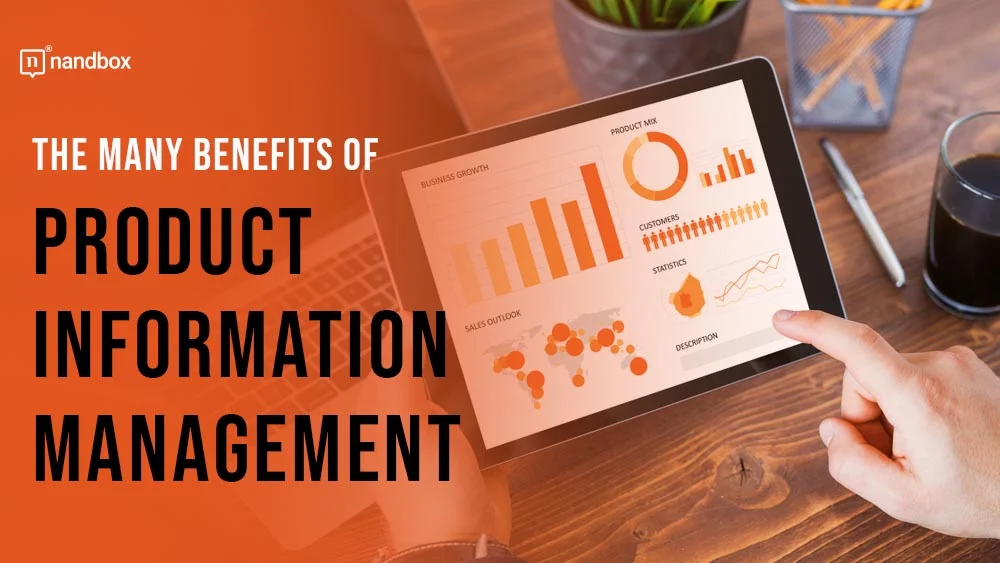It is a duty for every business owner to simply research and educate themselves well regarding a lot of things. Such as factors, systems, strategies, and market plans that could help take their business to the next level. That is why we are introducing you to the many benefits of Product Information Management in this article.
Product Information Management (PIM) is a powerful tool that can help businesses streamline their operations and improve their bottom line. By centralizing and managing product information, PIM can provide a range of benefits. From increased efficiency to an improved customer experience. In this article, we’ll explore the top 10 benefits of implementing PIM for your business.
What Is Product Information Management (PIM)?
Product information management is the process of collecting and organizing product data. This occurs across a variety of different platforms and distribution channels. The goal is to have a centralized system for managing all of the data pertaining to the product. This will allow you to provide numerous stakeholders with accurate and up-to-date information regarding the product.
Software, also known as product information management (PIM), is a strategy that businesses simply use. That is in order to gather, organize, and manage product information. It includes managing several things. Like product descriptions, features, and specifications, as well as photographs, videos, pricing, and availability information.
Furthermore, with product information management, you’ll be able to automate the dissemination of this information. That is via a variety of sales channels, such as e-commerce platforms, marketplaces, and social media. Implementing PIM software ensures that your product data is consistently accurate across all channels, enhancing efficiency and customer satisfaction while reducing manual workload. This ensures that clients always receive information that is true and consistent regarding the products they purchase. That is regardless of where they contact the business
Benefits of Product Information Management
There are various benefits that are provided to you once you start your product information management process. We will be going through each and every detail of these benefits. In order to give you the full amount of information that will help you understand this management solution fully.
Automatic Updates That Help Reduce the “Update Burden”
Manually updating product information on spreadsheets for each individual product takes up time. Additionally, exposes your datasheet to the possibility of inaccuracy. When numerous people work on the same page, the likelihood of errors increases, defeating the aim of preserving a single source of quality information.
In an eCommerce product information management system, data will automatically synchronize between all of the various sales channels. It means that altering the information for a single product will update the catalog as a whole. This will reduce the amount of work that you need to do manually to manage and update product information. Additionally, the system enables the scheduling of modifications in advance, which makes it much simpler to alter or update information.
Helps Maintain Your Data Quality
If you can’t handle the data, it will have the tendency to quickly multiply. This might result in inconsistent data sets. The inaccurate information and unnecessary repetition may cause customers to have a negative experience. Causing them to abandon their shopping carts and raising their rate of returns. This is something any e-commerce business owner would define as a nightmare.
You can create a unified master data management sheet automatically. That is by using a product information management solution. In addition to this, it will be useful in conducting a comprehensive review of the system in order to locate and eliminate inaccurate data as well as duplicates.
A Single Data Source for Better Efficiency
When someone disperses and scatters data, it might be difficult to retrieve the appropriate information. Also, hardly at the appropriate moment. Consider it as a shopper going into a store where people scatter the whole merchandise all over the place. The proprietor of the store will have a difficult time locating the item that the customer requests, which will result in an extended period of time spent waiting.
Collecting and managing information from multiple sources can be easier with the assistance of a product information management system. Because of this, the team may always refer to the same source for information. Another option is to simply reshare the data with a sales channel. Additionally, they can also access it whenever they need to.
Provides Your Customers With the Experience They Deserve
If the displayed product information is out of date, incorrect, or incomplete, there is a higher chance that customers will abandon their carts and return their purchases. Customers will report feeling frustrated, which will, in turn, have a negative impact on their overall experiences as customers.
A product information management system ensures that the data is of high quality. Furthermore, no one tampers it. There are no more duplicates, the data is in its entirety, the categorizations are accurate, and the material is regularly in an up-to-date state. Furthermore, it syncs automatically channels with each others. A pleasurable and satisfying shopping experience is guaranteed to be provided in the event that the information is represented flawlessly.
Helps Enhance Personalization
Customers are drawn to experiences that are uniquely catered to them, such as product recommendations. Statista offered the statistic that customers who are offered a personalized experience tend to give the service offering them their full attention. Moreover, according to Mckinsey, the recommendations section of Amazon generates 35 percent of the company’s revenue. However, in order to successfully build a recommendation engine system, it is necessary to have complete and correct product information for all of the existing products.
A PIM system is responsible for maintaining a single repository of product information that is unified and focused on quality. This makes it possible for the recommendation engine to select the appropriate attributes of items that match each other and present useful recommendations, which in turn helps you expand your bottom line.
Facilitates Integrations (Seriously, What’s Not to Love or Use in This Case?)
In the past, product information was kept in separate databases called silos, and these databases did not integrate with any current ERP, Warehouse, inventory, or other third-party eCommerce management systems. Because product information is the primary source of feed for all of the other eCommerce tech stacks, this results in an increase in the level of complexity.
A product information management system guarantees that ERPs, inventory control systems, warehouse administration systems, and customer relationship management systems all automatically share product information with one another. Because of this simple integration’s ability to provide constant communication across the systems through APIs, the overall efficiency of each enrolled eCommerce technology stack is significantly improved.
Allows Products to Reach the Market Faster
Manual administration of data takes time. Even if the company managers are successful in creating the product datasheet just once, the impending adjustments and updates will typically need to be addressed, even though the previous data will still be there in the sheets.
The data on the product will always be accurate if you use a product information management system to keep track of it. When a new modification is made to the data sources that are already in place, it automatically synchronizes the modifications to the datasheets. By automating changes, you can be certain that the product information is always up-to-date and that the product is always ready to be sold.
Helps Enhance SEO Optimizations
If the product information is dispersed, redundant, lacking, and in silos, planning an SEO strategy is futile. No matter how thorough the keyword research is, the SEO efforts will probably be ineffective and lead to subpar rankings.
A PIM system keeps a space for updating Meta descriptions and item titles, neatly groups items based on feature sets, eliminates duplication, and makes sure there are no content gaps on the product page. This in turn helps develop and carry out a product-focused SEO strategy, which further enhances Google rankings.
In summary, businesses may successfully manage product information using a PIM system, enabling them to regularly update, maintain, and distribute product changes across various channels such as e-commerce sites, mobile apps, brochures, and sales channels.
Companies with huge product catalogs, numerous sales channels, and complicated product information requirements benefit from using product information management software. They are able to increase data accuracy, decrease data input errors, and shorten the time it takes to sell new goods by organizing and streamlining product information management with PIM solutions.
Traditional Product Management vs. PIM
Traditional product management frequently gathers, manages, and disseminates product information using disjointed systems, spreadsheets, and manual methods. This strategy might result in errors, mistakes, and inefficiencies that hurt a retailer. PIM solutions, on the other hand, centralize and automate many of these processes. As a result, developers simplify data management, increase data accuracy, and improve team and channel cooperation.
Businesses may reduce the time and resources needed to handle product information thanks to the advantages of information management via a PIM system, freeing up personnel to concentrate on more strategic duties. Additionally, by guaranteeing that product information is correct and consistent across all touchpoints, PIM systems can assist organizations in enhancing the consumer experience.
Wrapping It Up on The Benefits of Product Information Management!
So now that we know the benefits of PIM and how it could influence your business and guide it on the right path, let us discuss another approach to business empowerment. Applications are the new tech language everyone is speaking nowadays. That is why our no-code app builder is considered the best option if you wish to be on an enhanced business track. No code means a hassle-free tech experience.
All you have to do to have an application that strengthens your business value is sign up for Nandbox’s native no-code app builder, choose a pre-made template, and start customizing it according to your preferences. It is easy, cost-effective, and a huge time-saver. Sign up now and empower your business with a seamless application for users to enjoy and benefit from!






